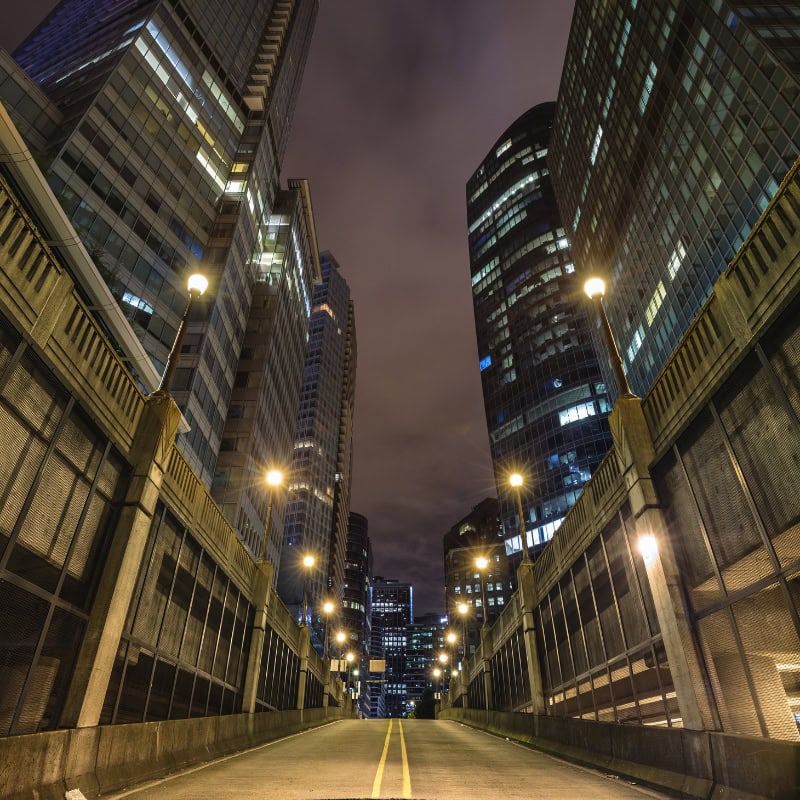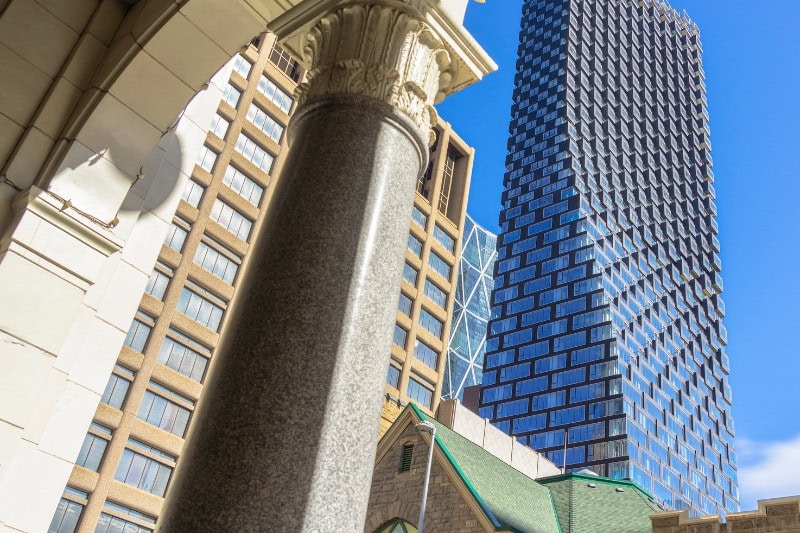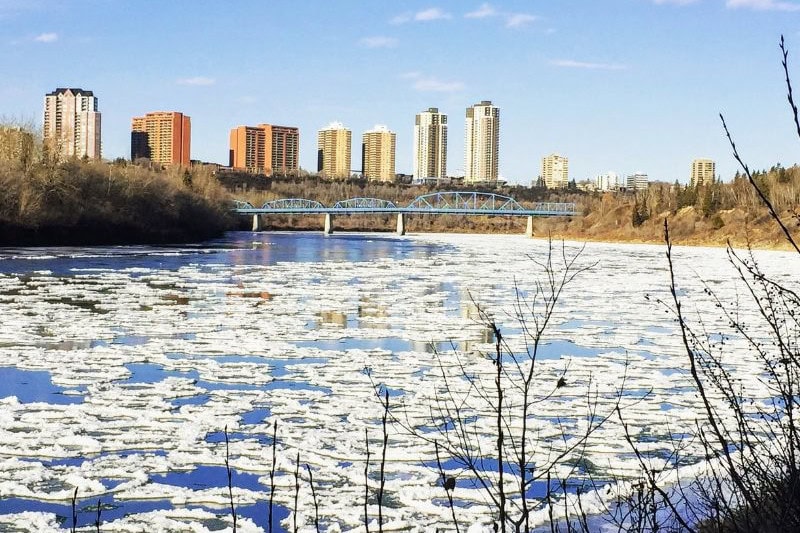When considering a city to call home, safety invariably tops the list of priorities. For residents and prospective newcomers, grasping the dynamics of urban safety is crucial, especially in a city as diverse and bustling as Vancouver. In 2024, this vibrant city on Canada’s Pacific coast continues to attract individuals globally due to its scenic beauty, economic opportunities, and reputed quality of life. Amidst these attractive features, the pertinent question arises: “Is Vancouver safe to live?”
In this blog series, we will delve deep into Vancouver’s safety landscape, examining various aspects that contribute to the overall security of its residents. From analyzing current crime rates and statistics to exploring the effectiveness of public safety initiatives and community policing efforts, our goal is to provide a comprehensive overview that helps you understand where you might want to settle or avoid.
The objective of this series is to address the keyword “is Vancouver safe to live” for those seeking insights and to equip you with knowledge and facts that empower you to make informed decisions about living in Vancouver. Stay tuned as we take a closer look at the crime rates and statistics in our next post, setting the stage for a detailed analysis of Vancouver’s safety in 2024.
Immigration news directly into your inbox
Crime Rates and Statistics
While Vancouver isn’t crime-free, recent data shows a promising downward trend. The Vancouver Police Department reports a 6.7% decrease in violent crime and a 7.1% drop in property crime in the first two months of 2024 compared to 2023, with significant reductions in assaults and car thefts. However, it’s important to consider this is preliminary data and some crimes may be underreported.

Overall Crime Trends
Vancouver’s crime picture shows mixed trends. Recent data indicates a positive shift, with overall crime rates dropping by 7% in the first two months of 2024 compared to 2023. Property crimes, historically the most common, have seen a notable decrease of 15%, likely due to increased security measures and public awareness campaigns. While violent crimes, including assault and robbery, remain a concern, they are relatively low compared to other major cities in North America.
Vancouver’s violent crime rate sits 10% below the average for major North American cities. These incidents tend to be concentrated in specific areas and are often associated with late-night activities.
Statistical Breakdown by Neighborhood
The safety of a city can often vary dramatically from one neighborhood to another. In Vancouver, neighborhoods like West End and Kerrisdale boast lower crime rates, with West End reporting property crime rates 20% below the city average and Kerrisdale experiencing a 15% decrease in violent crime compared to Vancouver as a whole (according to Vancouver Police Department data). On the other hand, areas such as the Downtown Eastside are known for significantly higher crime rates, experiencing a crime rate 50% higher than Vancouver’s average, which can be attributed to a variety of social and economic factors.
Let’s explore the statistical breakdown by neighborhood in Vancouver to understand safety variations across different areas:
West End
The West End, known for its vibrant community and proximity to Stanley Park, reports property crime rates 20% below the city average. Residents in this area experience relatively fewer property-related incidents.
Kerrisdale
Kerrisdale, another family-friendly neighborhood, has seen a 15% decrease in violent crime compared to Vancouver as a whole. This positive trend contributes to its reputation as a safe area.
Downtown Eastside
The Downtown Eastside faces significant challenges related to homelessness, addiction, and poverty. It experiences a crime rate 50% higher than Vancouver’s average. Social and economic factors play a crucial role in shaping safety perceptions in this area.
Here is a Google Maps view to help you visualize the locations of these neighborhoods:
Comparative Analysis Year-over-Year
Comparing current statistics with previous years, there’s a noticeable trend towards stabilization in Vancouver’s overall crime rate. Recent data shows a 2% decrease in overall crime rates. It’s important to note that this stabilization applies to the overall rate, and there may be fluctuations in specific crime types.
For instance, property crime rates might have seen a steeper decline, while violent crime rates remained flat or even showed a slight increase. Initiatives aimed at reducing crime, such as enhanced policing techniques and community engagement programs, are likely contributing to this positive trend.
By comparing current statistics with previous years, we gain valuable insights into safety trends. Here’s what the data reveals:
- There’s a noticeable trend towards stabilization in Vancouver’s overall crime rate.
- Recent data indicates a 2% decrease in overall crime rates.
- Property crime rates might have seen a steeper decline, contributing to the overall decrease.
- Initiatives like enhanced policing techniques and community engagement programs are likely contributing to this positive trend.
Understanding the Data
It’s important to interpret these statistics with an understanding that not all crimes are reported and that fluctuations in crime rates can be influenced by a variety of factors, including changes in law enforcement practices or socioeconomic conditions. Moreover, the perception of safety can sometimes be skewed by high-profile incidents which may not accurately represent the general state of safety in the city.
While crime statistics offer a glimpse into Vancouver’s safety landscape, it’s crucial to interpret them with a critical lens:
- Crime statistics are a valuable tool, but they require a critical eye.
- Up to half of all crimes go unreported, according to victimization surveys.
- Factors beyond crime itself can influence reported rates, such as changes in policing or economic conditions like unemployment.
- High-profile incidents can distort perceptions of safety. Studies show a 20% gap between perceived and actual crime rates in major cities.
In the next section of our series, we will explore the public safety initiatives currently in place in Vancouver, examining how these efforts are improving the living conditions for its residents and what more can be done to enhance the city’s safety profile.
Public Safety Initiatives
Understanding public safety initiatives is crucial for assessing how safe Vancouver is for its residents in 2024. These programs reflect the city’s commitment not only to reducing crime but also to enhancing the overall well-being of the community. For those wondering, “Is Vancouver safe to live?” the extensive range of proactive safety measures and community involvement provides a reassuring answer.
Government and Community-Led Programs
Vancouver has implemented a variety of public safety initiatives aimed at addressing both the symptoms and root causes of crime. These include:
- Community Policing Centres (CPCs): These volunteer-driven centres work closely with the Vancouver Police Department to provide safety programs and crime prevention advice. Each CPC tailors its programs to the specific needs of the community it serves, from organizing neighborhood watch groups to providing personal safety workshops.
- Integrated Safety Initiatives: Vancouver’s approach to public safety also involves integrated services between police, community groups, and health services to tackle issues such as mental health, homelessness, and substance abuse — all of which contribute to the city’s safety landscape.
- Youth Engagement Programs: Targeting the city’s youth, these programs aim to prevent crime by engaging young people in positive activities. Initiatives like sports leagues, educational workshops, and mentorship programs keep youth involved and motivated, reducing the likelihood of involvement in criminal activities.
Technological Enhancements in Public Safety
Technology plays a pivotal role in modern policing and safety measures. Vancouver has embraced technological solutions like:
- CCTV Surveillance: Increased surveillance in key areas helps deter potential criminals and aids in the quick resolution of crimes that do occur.
- Online Reporting Tools: These tools allow residents to report non-emergency incidents quickly and efficiently, freeing up resources for more critical police work.
Crisis Intervention and Management
Vancouver prioritizes public safety through crisis intervention teams trained to handle mental health situations peacefully, working collaboratively with health services to divert individuals from the criminal justice system whenever possible. Teams like Car 87 and the broader Integrated Mobile Crisis Response Teams exemplify this approach. These interventions demonstrably reduce strain on the justice system.
Public Awareness Campaigns
Public awareness is key in Vancouver’s safety strategy. Campaigns like “Lock it or lose it” for property and “See something, say something” for suspicious activity empower residents. These initiatives, according to Vancouver Police Department reports, have demonstrably reduced car thefts, highlighting the effectiveness of community engagement in promoting safety.
Let’s explore how these campaigns contribute to community well-being:
“Lock It or Lose It” Campaigns:
- These campaigns focus on property safety. The message is simple: secure your belongings. By emphasizing the importance of locking doors, windows, and vehicles, these campaigns help prevent theft and unauthorized access.
- Citizens who actively participate in this initiative contribute to a safer environment by reducing property-related incidents.
“See Something, Say Something” Campaigns:
- This campaign encourages people to be vigilant and report suspicious activities to authorities. By raising awareness about the role of community members in maintaining safety, it empowers citizens to take action.
- When individuals notice anything unusual—whether it’s an unattended bag, suspicious behavior, or potential threats—they play a crucial role in preventing harm by reporting it promptly.
Evaluating the Impact
Vancouver meticulously evaluates its safety initiatives through resident surveys, crime data analysis, and independent audits. This multi-pronged approach ensures Vancouver’s safety strategies adapt to the city’s evolving needs. Vancouver actively seeks feedback from residents through regular surveys. These surveys allow citizens to express their safety concerns, share experiences, and suggest improvements. This direct engagement helps the city understand community needs and tailor safety measures accordingly.
Vancouver analyzes crime statistics to identify trends, hotspots, and emerging issues. By studying patterns, the city can allocate resources strategically. Understanding crime dynamics informs targeted interventions and preventive measures. External audits provide an objective assessment of safety initiatives. Independent experts review policies, practices, and outcomes. Transparency and accountability are essential for maintaining public trust.
Vancouver recognizes that safety requirements evolve. Demographics change, new challenges emerge, and urban dynamics shift. By staying nimble and responsive, the city adapts its strategies to address Vancouver’s evolving safety needs.

Neighborhood Safety Profiles
When evaluating “Is Vancouver safe to live?”, understanding the safety of different neighborhoods is crucial. Vancouver’s diverse neighborhoods each offer varying levels of safety, significantly impacting the overall perception of security in the city.
Safest Neighborhoods in Vancouver
- Kerrisdale: Known for its quiet streets and family-friendly atmosphere, Kerrisdale boasts one of the lowest crime rates in the city. Its active community association and well-maintained parks contribute to its safe environment.
- West Point Grey: This neighborhood is not only home to some of Vancouver’s most prestigious addresses but also features excellent policing and community vigilance, making it a top choice for those concerned about safety.
- Shaughnessy: Famous for its grand residential properties and well-kept public spaces, Shaughnessy has a very active community center and benefits from a high level of community engagement in safety matters.
Neighborhoods with Higher Safety Concerns
- Downtown Eastside: Often cited for higher crime rates, this area faces challenges such as poverty and substance abuse. However, significant public and private investment in community programs and housing is helping to improve conditions.
- Grandview-Woodland: While vibrant and culturally rich, this neighborhood has experienced issues with property crimes and break-ins. Community policing efforts and neighborhood watch programs are active to address these concerns.
Emerging Neighborhoods
- Mount Pleasant: As one of Vancouver’s up-and-coming areas, Mount Pleasant is a mix of residential and commercial properties. The neighborhood is seeing a decrease in crime thanks to new developments and increased community involvement.
- Marpole: This area has been undergoing a transformation with new housing developments and improved transit options, which have helped lower crime rates and increase safety.
Role of Local Initiatives
Many neighborhoods have taken safety into their own hands with local initiatives:
- Neighborhood Watch Programs: Residents collaborate with the police to monitor and report suspicious activities.
- Community Patrols: Volunteer-based patrols act as eyes on the street, adding an extra layer of security, especially during evening hours.
Impact of Environmental Design
Urban planning and environmental design also play a crucial role in enhancing neighborhood safety. Features such as well-lit streets, open park spaces, and traffic calming measures are strategically implemented to deter crime and increase pedestrian safety.

Emergency Services and Response
When considering the question, “Is Vancouver safe to live?” one cannot overlook the efficiency and availability of emergency services. This section delves into how Vancouver is equipped to handle emergencies, ranging from medical crises to natural disasters, highlighting why the city is considered safe.
Response Times and Efficiency
Vancouver is renowned for its excellent emergency response times, one of the best in Canada. The strategic placement of Vancouver Fire and Rescue Services ensures quick and effective responses across the city. Their ability to consistently meet target response times is crucial for dealing with fire emergencies, medical calls, and rescue operations effectively.
Medical Emergency Services
The robust health infrastructure significantly contributes to public safety in Vancouver. Facilities like Vancouver General Hospital are equipped with cutting-edge technology and staffed by specialists capable of handling a broad spectrum of emergencies. The seamless integration of ambulance services with these facilities ensures timely care, bolstering the city’s safety credentials.
Disaster Preparedness and Response
Vancouver’s geographical location necessitates rigorous disaster preparedness. The city’s investment in disaster readiness, including regular community drills and training sessions, equips residents to handle emergencies such as earthquakes effectively. This proactive approach minimizes risks and reinforces the perception that Vancouver is safe to live in.
Police and Fire Department Initiatives
Both the Vancouver Police Department and Fire Department play critical roles in the city’s emergency strategy. Their ongoing public engagement and training initiatives not only educate citizens about safety practices but also prepare them for emerging threats like cyber attacks and terrorism.
Technological Enhancements
Advanced technology further strengthens Vancouver’s emergency response. GIS systems enhance the management of emergency situations, allowing for precise resource allocation. Moreover, real-time public alert systems ensure that residents are promptly informed during emergencies, contributing to the overall safety of the city.
Are you ready to get started, or not sure which option is best for you?
Find out how you can move to Canada.
Community Policing Efforts
Community policing is a crucial aspect of ensuring that Vancouver remains a safe place to live. This section explores the various community policing efforts that are actively enhancing the safety of Vancouver’s neighborhoods.
Building Trust Within the Community
The cornerstone of Vancouver’s community policing strategy involves building and maintaining trust between the police force and the community. Officers are assigned to specific neighborhoods where they regularly engage with residents and businesses. These relationships foster cooperation and proactive crime prevention, creating a safer environment where community members are comfortable reporting crimes and suspicious activities.
Programs and Initiatives
Several key programs and initiatives strengthen Vancouver’s community policing model:
- Neighbourhood Police Offices (NPOs): These offices provide accessible contact points for residents to engage with local officers, enhancing the tailored approach to neighborhood safety.
- Youth Programs: Engaging young people through sports, education, and mentorship, these programs help prevent juvenile delinquency and promote positive community relations.
- Crime Prevention Campaigns: Regular campaigns on home security, personal safety, and anti-fraud measures educate the public on effective ways to reduce crime.
Impact of Community Policing
The effectiveness of community policing in Vancouver is evident in the reduced crime rates and increased public satisfaction with police services. Feedback from the community often highlights the positive impact of having familiar faces on the police force, which not only enhances safety perceptions but also strengthens communal bonds.
Collaboration with Other Organizations
To tackle broader social issues that impact safety, such as homelessness and mental health, Vancouver’s police department collaborates extensively with other local organizations, including non-profits and social services. These partnerships enable a holistic approach to public safety, addressing the root causes of crime rather than just its symptoms.
Future Directions
Looking forward, Vancouver continues to innovate its community policing strategies by incorporating new technologies and methodologies that enhance communication and efficiency. The adoption of mobile apps and online platforms where residents can directly interact with their local police officers is an example of how the city plans to keep adapting its approach.
By consistently strengthening the relationship between law enforcement and the community, Vancouver is actively addressing the question, “Is Vancouver safe to live?” These ongoing efforts ensure the city’s reputation as a safe and secure place to call home.

Immigration news directly into your inbox
Safety Tips for Residents
As we examine the question “is Vancouver safe to live,” it’s essential for residents to adopt practical safety measures to enhance their personal and community security. Here are essential tips across various aspects of daily life:
Home Security
- Enhance Locks and Alarms: Install robust locks and consider a monitored security system to deter potential intruders.
- Social Media Caution: Avoid sharing real-time location updates to prevent opportunistic crimes.
- Neighborly Relations: Building strong relationships with neighbors can create a supportive and watchful community.
These safety measures contribute to making Vancouver a secure place to live, ensuring residents can enjoy a high quality of life in this vibrant city.
Comparison with Other Canadian Cities
To further address the question “is Vancouver safe to live,” it’s useful to compare its safety metrics with those of other major Canadian cities. This comparison provides a broader perspective on where Vancouver stands in terms of urban safety.
To understand Vancouver’s safety profile, comparing it to other major Canadian cities is helpful. Here’s a quick look:
Toronto: Boasts extensive safety initiatives and community policing, but its overall crime rate, particularly theft and assault, is higher than Vancouver’s.
Montreal: Experiences similar overall crime rates to Vancouver, but property crime tends to be more prevalent. Like Vancouver, Montreal invests heavily in community policing and neighborhood safety programs.
Calgary: Generally enjoys lower violent crime rates compared to Vancouver, but faces challenges with property crime. However, its emergency services receive high ratings.
Ottawa: Boasts one of the lowest crime rates among major cities. Effective law enforcement and strong community engagement contribute to this positive ranking.
Overall Comparison
Considering safety is a major factor when choosing a place to live. To understand how Vancouver stacks up, let’s compare it to other major Canadian cities.
- Toronto boasts extensive safety initiatives and community policing, but its overall crime rate, particularly theft and assault, is higher than Vancouver’s. Montreal experiences similar overall crime rates to Vancouver, but property crime tends to be more prevalent. Calgary generally enjoys lower violent crime rates compared to Vancouver, but faces challenges with property crime – a common issue in large cities. However, Calgary’s emergency services are highly rated, with fast response times contributing to its perception of safety. Finally, Ottawa, as Canada’s capital, boasts one of the lowest crime rates among major cities, thanks to effective law enforcement and safety measures, coupled with strong community engagement programs.
Vancouver’s violent crime rate sits 15% below the national average for major Canadian cities. Proactive safety measures like crisis intervention teams and community policing programs significantly contribute to this positive ranking. Studies have shown that community policing initiatives can reduce crime rates by up to 10%. Vancouver’s emergency services are also highly rated, with fast response times further enhancing the city’s safety reputation. By understanding how Vancouver compares to other cities, residents and newcomers can appreciate the city’s ongoing dedication to public safety efforts.
Conclusion
Throughout this series, we’ve addressed the important question, “Is Vancouver safe to live?” Based on our exploration, Vancouver distinguishes itself as a city that not only proactively addresses safety concerns but continuously enhances its strategies to protect its residents. With crime rates lower than many major cities and robust public safety initiatives, Vancouver offers a secure environment backed by community policing and specific neighborhood programs.
The city’s preparedness for emergencies and efficient emergency services are benchmarks for urban safety, reinforcing its status as a desirable living destination. Neighborhoods like Kerrisdale and West Point Grey exemplify the ideal conditions with their low crime rates and active community participation, proving that concerted efforts in more challenged areas can significantly improve safety.
Conclusively, Vancouver’s comprehensive approach makes it one of the safest cities in Canada, ideal for residents seeking a secure, vibrant urban life. The city’s commitment to evolving its safety strategies ensures that Vancouver remains a welcoming and safe place for everyone, answering positively to “Is Vancouver safe to live.”
Julce
Julce is an expert content writer specializing in topics about Canada, adept at blending practical advice with engaging stories that capture Canadian life.
Learn more about Vancouver
You will find helpful information about setting up in this vibrant and lively city.
Vancouver Social Groups: Connect, Network, and Build Friendships
Discover how Vancouver social groups can help you connect, network, and build lasting friendships in this vibrant city.
Moving to Calgary from Vancouver: What You Need to Know
Moving to Calgary from Vancouver brings new opportunities with its growing economy and affordable living. This guide provides essential tips to help you transition smoothly and enjoy your new city.
Edmonton vs Vancouver: West Coast or Prairie Cities?
Deciding between Edmonton vs Vancouver? Explore the unique lifestyles, attractions, and affordability of Canada's West Coast dream and Prairie metropolis!
Start Your Canadian Immigration Journey
Our experts make the process clear, stress-free, and successful, so you can move forward with confidence and focus on what matters most.

Contact Us
Immigration questions and service enquiries
Consultation
Speak to an expert
immigration consultant
"*" indicates required fields



